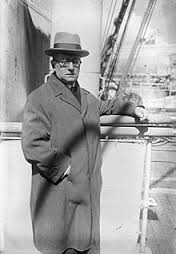
A pop song about the prominent violinists of the day? It seems hard to imagine now. But around 1921 George and Ira Gershwin wrote Mischa, Jascha, Toscha, Sascha, a lighthearted ditty about four great Jewish Russian violinists who were well known at the time: Mischa Elman, Jascha Heifetz, Toscha Seidel, and Sascha Jacobsen. The lyric also refers to “Fritz” (Kreisler) and the legendary teacher Leopold Auer. According to biographer Charles Schwartz, George Gershwin enjoyed playing the song at parties whenever one of the violinists who inspired the title was present.
Heifetz needs no introduction, but who are the others? Born in 1891, Mischa Elman is remembered for his rich, golden tone, expressive portamento, and tendency towards Romantic phrasing which occasionally bent the rhythm. Here is his recording of the Mendelssohn Violin Concerto with the Chicago Symphony. Here is a 1954 recording of Elman performing Dvořák’s Humoresque.
Toscha Seidel’s solo career was, perhaps unfairly, overshadowed by Heifetz. But we can hear the passionate intensity of his playing on recordings like this 1945 live performance of Ernest Chausson’s Poème with the Hollywood Bowl Orchestra conducted by Leopold Stokowski. Seidel eventually settled in California and became a studio soloist for Hollywood films. Listen to this music from the 1939 film Intermezzo which starred Leslie Howard and Ingrid Bergman.
Sascha Jacobsen is another violinist whose career was overshadowed by Heifetz. In his book Great Masters of the Violin, Boris Schwarz claims that Jacobsen was born in New York in 1897 and that his manager tried to turn him into a “Russian fiddler” for publicity purposes. In the 1940s he served as concertmaster of the Los Angeles Philharmonic. He was the teacher of Zvi Zeitlin. Here is a 1913 recording of Jacobsen performing Handel.
And now here is the Gershwins’ humorous snapshot of early twentieth century violin history:

